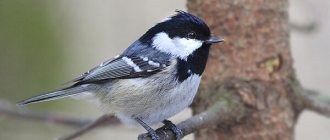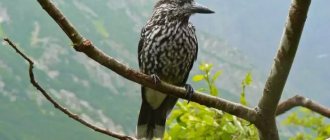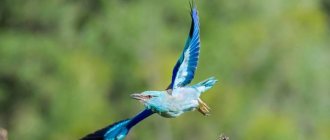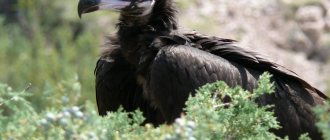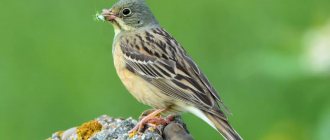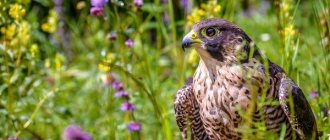| Latin name: | Procellariidae |
| English name: | Petrel |
| Kingdom: | Animals |
| Type: | Chordata |
| Class: | Birds |
| Squad: | Petrel-like |
| Family: | Petrels |
| Genus: | To be confirmed |
| Body length: | 25 cm |
| Wing length: | 23-29 cm |
| Wingspan: | 60 cm |
| Weight: | 200 g |
Origin of the species and description
Photo: Burevestnik
The petrel is a seabird of the order Petrel-like. In fact, the order includes many species of birds that are united under this name. What all species have in common is their physiology, which allows them to hover over water for a long time and feed from the ocean. The most important distinguishing feature is the tubes in the beak through which the salt comes out.
Petrels need a lot of water, but live over salty seas and oceans, where there is no source of fresh water for a huge number of kilometers. Therefore, like penguins, they have adapted to drink salt water. Salt water passes through a “filter” in their beak and is released through tubes as salt.
Video: Petrel
Petrels vary in size and color, but are generally very large, massive birds with a wingspan of up to 1 m. It is the second largest bird after the albatross. Petrels go back to the Oligocene - about 30 million years ago, although some remains of physiologically similar birds were found back in the Cretaceous period - dating back to 70 million years ago.
It was the common ancestor of petrels, albatrosses and storm petrels, but petrels were the first to emerge. Most of the ancestors of the petrel lived in the Northern Hemisphere, including the North Atlantic Ocean. At the moment, there are no petrels there, or they fly there by accident while actively searching for food.
see also
petrel - storm petrel, tubenosed, albatross Dictionary of Russian synonyms. petrel noun, number of synonyms: 8 • albatross (5) • ... Dictionary of synonyms
BUREVESTNIK is a sports club for university students and teachers. Founded in 1957. Cultivates approx. 50 Sports (1993). Member of the International University Sports Federation FISU (FISU) since 1959 ... Big Encyclopedic Dictionary
PETUREVESTNIK - [sn], petrel, husband. A bird of one of the marine species, the albatross. Ushakov's explanatory dictionary. D.N. Ushakov. 1935 1940 ... Ushakov's Explanatory Dictionary
BUREVESTNIK - BUREVESTNIK, ah, husband. A large oceanic bird with a long beak and long sharp wings. A squad of petrels. Diving petrels (family). Ozhegov's explanatory dictionary. S.I. Ozhegov, N.Yu. Shvedova. 1949 1992 ... Ozhegov's Explanatory Dictionary
BUREVESTNIK - [revolution]. Publ. Pathet. 1. About the writer M. Gorky. Mokienko, Nikitina 1998, 70. 2. About a revolutionary, an ardent fighter for something. Zainuldinov, 27 ... Large dictionary of Russian sayings
Petrel - a; m. Large sea waterfowl with a hooked beak, narrow and long wings. ● After A. M. Gorky wrote (1901) the Song of the Petrel, a symbol of the coming revolution. * * * Burevestnik I newspaper, organ of the anarchist group of the same name... ... Encyclopedic Dictionary
Source
Appearance and features
Photo: What a petrel looks like
The entire appearance of the petrel testifies to the ability to soar for a long time in the air over the expanses of the ocean. They have a short body, strong wings and small feet. The feather cover of petrels is dense, preventing the birds from freezing under gusts of wind and getting wet from salt water and rain.
Interesting fact: The feet of petrels are so small and located so close to the tail that the birds cannot even stand on them - they have to rely on their wings and chest. The beaks of these birds are always slightly pointed, curved at the end - this allows the birds to effectively hold slippery fish.
Depending on the species, petrels differ in appearance, including in size.
The most common types are the following:
- northern giant petrel. This is the largest bird of the petrel family;
- southern giant petrel. This bird is smaller in size than its northern relative;
- Antarctic petrel. These are medium-sized birds of a brown color;
- Cape petrel. They are also called Cape pigeons. This is a small, bright bird, reaching a length of 36 cm;
- snow petrel. This is a small species up to 30 cm long;
- blue petrel. It is also a medium-sized bird with a wingspan of up to 70 cm.
These are just some of the petrel species. The family includes more than 70 officially recognized species.
Where does the petrel live?
Photo: Petrel in flight
The petrel spends almost its entire life hovering over the oceans and seas. Its wings are adapted to support the petrel’s body for days, maneuvering on gusts of air. It is difficult to name a specific range of petrels, since, unlike albatrosses, they live in both the Southern and Northern Hemispheres. The northern giant petrel can be found in the Atlantic, Pacific, and Indian oceans. Nesting site: South Georgia Islands.
The southern giant petrel lives in these same waters, but nests only near Antarctica. Antarctic and snow petrels also live there. Cape and blue petrels prefer sub-Antarctic climates, nesting at Cape Horn. The Wetland petrel lives only off the coast of New Zealand. Little, pied-bellied and gray petrels nest in the Atlantic. The habitat of the slender-billed petrel is also limited - exclusively to Tasmania off the coast of Australia.
Petrels do not require land as a permanent habitat. They can take short breaks right on the water, and have the ability to sleep right in the air, simply relying on outstretched wings and the wind. Petrels often land on ships and barges to rest - this is how this species was discovered by sailors. Petrels nest only during the breeding season, when they need to lay eggs and care for their young. They always choose the same places for nesting.
Interesting fact: A petrel born on a specific island will always breed there.
Now you know where the petrel lives. Let's see what he eats.
What does the petrel eat?
Photo: Petrel bird
The petrel is a bird of prey. To constantly maintain energy in a huge body that is in flight for days, the petrel needs a huge amount of protein. Therefore, in addition to small fish, its diet includes all kinds of crustaceans and cephalopods - especially squid. Sometimes petrels chase fishing boats. There they can not only relax, but also profit from fish from the nets. Petrels also readily eat carrion and steal food from other birds of prey and mammals.
Particularly large species of petrels are capable of hunting on land. They mainly destroy the nests of seagulls, penguins and other birds by eating eggs. But it happens that they even attack penguin chicks or seal pups. It costs nothing for a large petrel to peck a baby pinniped while the mother is hunting.
Interesting fact: Even though crested penguins are small birds, petrels do not bother them due to their lively nature.
A special item in the diet of petrels is krill. With beaks that filter salt water, petrels glide just below the water's surface, scoop water into their beaks, filter it, and ingest nutritious krill as they go. This allows them to survive even in times of famine. Petrels actively hunt only at night. Pressing their wings tightly to their body, they, like a rocket, plunge into the water in the place where they noticed a school of fish. They quickly catch several fish, swallow them right under water and swim out with the fish in their beak. The maximum depth to which these birds dive is 8 meters.
Behavior
Breeding populations and trends
[3]
| Location | Population | date | Trend |
| Gough Island | 10000+ pairs | 2004 | Decrease |
| General Tristan da Cunha | 10000+ pairs | 2004 | |
| Marion Island | 1600 pairs | ||
| Prince Edward Island | 2000–5000 pairs | ||
| Kerguelen Islands | 2000–5000 pairs | ||
| Crozet Island | 2000–5000 pairs | ||
| Amsterdam Island | 10 pairs | ||
| Campbell Island | 100-600 pairs | ||
| Macquarie Island | 59-80 pairs | Decline | |
| Antipodes Island | 53000 pairs | 2001 | Decline |
| Total adults | 400,000 | 2004 | Decrease |
Breeding
Gray petrels return to their breeding grounds in February and March and build a nesting hole. These burrows are in well-drained soil, filled with Poa
heading grass, usually on steep slopes. By the end of March or beginning of April they lay their eggs, with both birds incubating it. After hatching, the chick is cared for by both birds while it fledges from late September to early December.[3]
Feeding
They will dive for food from heights of up to 10 m (33 ft).[3] It breeds on Tristan da Cunha, Gough Island, Prince Edward Island, Crozet Islands, Kerguelen Islands, Macquarie Island and beyond New Zealand's Campbell and Islands Antipodes.
Features of character and lifestyle
Photo: Burevestnik in Russia
The bird spends most of its time flying over water. They fly in small flocks of 5-7 individuals. This makes it easier for them to look for prey underwater and escape from possible dangers. Large groups of petrels gather over a school of fish, a boat or other prey. Because of this, some sailors consider them "sea vultures." Sailors know about the amazing ability of the petrel to sense the approach of a storm. In calm, windless and dry weather, these birds soar peacefully in the sky, looking for prey. But if a thunderstorm and strong winds approach, the petrels descend low to the water and scream. It is this behavioral feature that gives petrels their name.
Petrels are aggressive and cunning birds. Descending onto ships in small groups, they share responsibilities: some individuals distract sailors by pretending to steal fish, while other petrels actually steal and feed. On fishing barges, petrels can fill their bellies well. But there is also a side aspect, because of which petrels do not like to go on ships. Not only are their paws not adapted for normal walking, but they also cannot take off, descending to too low a surface.
The fact is that with such a ratio of wingspan and body size, it is possible to take off only by diving from a great height and catching gusts of wind. Therefore, petrels willingly fly in storms when they can calmly maneuver between numerous wind gusts. The aggression of petrels also extends to other animals. Having noticed a baby seal or penguin as prey, they may not wait for the parent to go hunting, but attack openly. Usually the maneuverability of a penguin or fur seal is not enough to drive away the petrel, and it kills the calf and feeds on it in front of the parent.
Notes
- ↑ 1 2
Koblik E. A., Redkin Ya. A., Arkhipov V. Yu. List of birds of the Russian Federation.
- M.: Partnership of Scientific Publications KMK, 2006
. — 256 p. — ISBN 5-87317-263-3 - Boehme R. L., Flint V. E.
Five-language dictionary of animal names. Birds. Latin, Russian, English, German, French / Under general. ed. acad. V. E. Sokolova. - M.: Russian language, RUSSO, 1994. - P. 18. - 2030 copies. — ISBN 5-200-00643-0. - Gill F., Donsker D. & Rasmussen P. (Eds.): Petrels, albatrosses (English). IOC World Bird List (v11.1)
(20 January 2021). doi:10.14344/IOC.ML.11.1. Access date: February 15, 2022. - Kostyuchenko R. A.
Little petrel on the Black Sea Nature No. 8 1952 - P. 120. - Kokhanov V.D.
1987. Review of changes noted in the avifauna of the Murmansk region over the last century. // Problems of studying and protecting the nature of the White Sea region. Murmansk. pp. 20-37. - ↑ 12
Bauer et al., S: 219 - Bauer et al., p. 220
Social structure and reproduction
Photo: Gray petrel
Sexual dimorphism in petrels is not pronounced. In some species, the female is slightly smaller than the male, but sometimes there is not even such a difference. Therefore, the petrels themselves determine the female or male by certain sound signals and body movements.
Birds unite in large colonies where they look for a mate. Such colonies can reach a million individuals. This makes it difficult to find a good place for a nest, so the petrels fight a lot among themselves for a comfortable territory. Fights between petrels continue over the right to mate with a female. It is extremely rare for petrels to form stable pairs that do not break up for several years.
After the female has chosen a male, mating games begin. The male brings gifts to the female - stones and branches for building a nest. Together they create a nest, after which mating occurs and one egg is laid. The female leaves the egg in the care of the male, and she flies away for a month and feeds in the sea. By the time she returns, the chick has already hatched, so she begins to feed it digested food from their special crop. The father may fly out to sea to feed, but returns regularly to feed the female and growing chick.
Leaving him alone is dangerous - other petrels may kill the calf for unjustified reasons. Small petrels mature at two months, large ones at four months. The matured chicks fly away from the nest and forget their parents. In total, these birds live at least 15 years, but the longest-lived one lived up to 50 in captivity.
Lifestyle
The petrel clearly gravitates towards open sea spaces, approaching the shore only during the nesting period. It often lands on steep, uneven shores, but gives preference to small rocky islands located in the open sea. The rest of the year it flies over the sea at a distance of many thousands of kilometers from the nesting site.
Forms colonies. In mid-May - mid-July, a single white egg is laid in a rock crevice, in a grotto or between stones, which is cared for by both parents for about 53 days. The chick remains in the nest for about 3 months. There is only one clutch per year. Shearwaters are monogamous, with pairs remaining together for many years. It feeds mainly on fish. It hovers over the crest of a wave for a long time.
At night, while in the colony, it makes sounds similar to the complaints or cries of a newborn. A few days before leaving the nest, the parents leave the chick, and it loses a little weight, which makes it easier for it to fly. The pair shows obvious affection for the nesting site.
Natural enemies of the petrel
Photo: What a petrel looks like
Petrels are large birds that can fend for themselves, so they do not have many natural enemies. The South Pole Skua often destroys nests, eats eggs and immature chicks if the parents have moved away somewhere. These birds also compete with petrels for food, so serious skirmishes can occur between them.
Rats and cats introduced into nesting areas also pose a danger to nests and chicks. But baby petrels also have their own means of defense. When experiencing fear, the chick shoots a stream of foul-smelling liquid from its mouth, which instantly scares away any predators. This liquid is oily, difficult to wash off and has a long-lasting odor, which complicates further hunting by a possible predator.
Fun Fact: As with penguins, gender confusion sometimes leads to same-sex couples in these birds.
Small petrel species may also be threatened by some fish and sea lions. They can be attacked by sharks or other large marine life when the petrel dives into the water for prey or when it simply swims through the waves. Underwater, these birds are defenseless, so they are easy prey.

